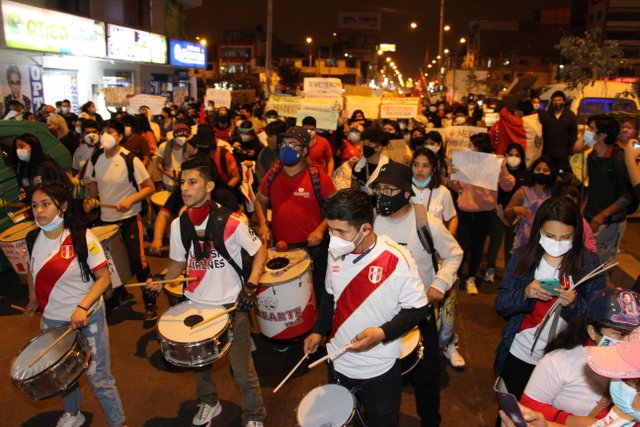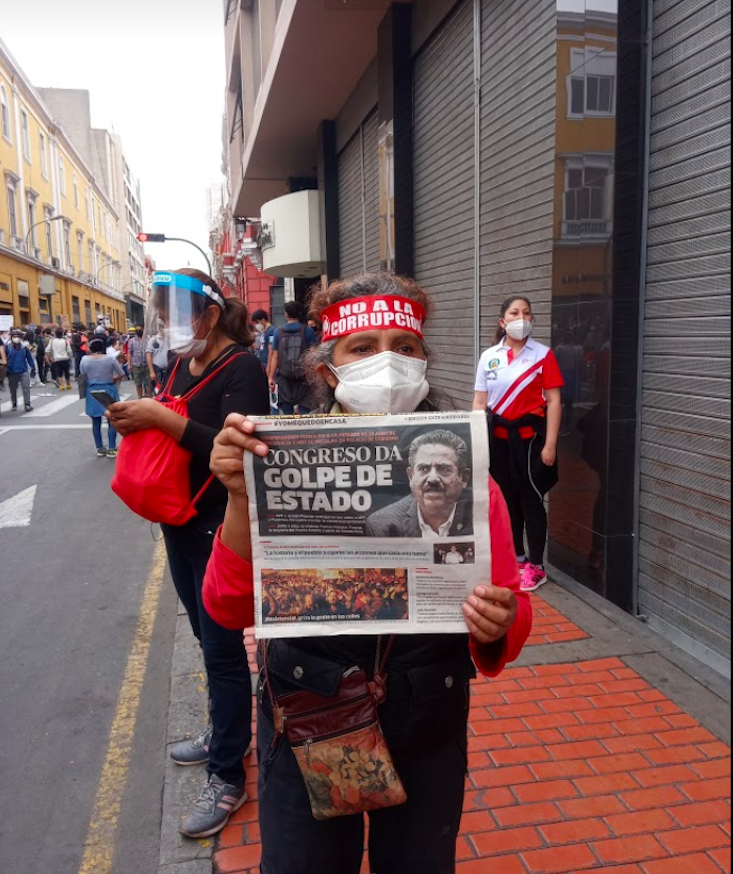The current economic and sanitary crisis in Peru is accompanied by a political muddle. Ariana Hurtado gives us a better understanding of what the country is going through.
On the 9th of November, President Martin Vizcarra was impeached by the Peruvian Congress because of moral incapacity. However, it is said that the true reason behind the impeachment was to get the president out of power so that Congress would have absolute control over the country. The removal of the president out of office took place only five months before the elections in 2021.
The last elected president of Peru was Pedro Pablo Kuczynski. His term lasted shortly, from the 28th of July 2016 until his resignation on the 23rd of March 2018. Following the resignation, the vice president Martin Vizcarra assumed office as the acting president of Peru. During his tenure, he tried to fight corruption, he dissolved Congress and appointed a new one. Following his legal acts, the relationship between the executive and legislative power estranged, leaving the president alone, without any support.
After the dismissal of President Vizcarra, the president of the Congress, Manuel Merino, was sworn in as the new president of Peru. Merino himself has a questionable reputation, similarly to those who put him in the office. During Merino’s ruling, there was no independence of legal authorities. The government was controlled by Congress and it could have had interference in judicial stays. After he took hold in office, Congress had less than 20% of trust from the Peruvian people.
Since then, the Peruvians have been protesting daily in the streets, which resulted in police brutality towards protestants. Police officers used tear gas, pellets, and even firearms to confront the people who took part in peaceful demonstrations. Hundreds of people were illegally detained and even the lawyers who tried to free them. As a result of police repression during the calm protests, two men were killed, more than a hundred were injured, and several people went missing. People who couldn’t go outside took part in the protest from home by hanging posters around their houses, sharing information on social media, and making noise with pots from home at 8 p.m., an event known as cacerolazos.

As a result of everything that happened, a group of my friends and I have decided to take the initiative and make our voices heard. We organised two events, the first was a vigil via Zoom, in memory of the two young men who died during the peaceful protests. We recounted the situation the country was going through, wrote motivational messages on posters, and lit candles. The second event was a concert with Peruvian singers and dancers who showed their support for the cause by sharing their art. All of this was done with the purpose to raise awareness about everything that was going on. Moreover, we raised funds that were later donated to the people of the medical brigade, people who deactivated bombs, and the wounded.
Additionally, we heard the testimony of some people who attended the marches. They told us first-hand information about everything they saw during the demonstrations.
“Since Saturday the 14th everything started to get very aggressive, the police abuse was incredible. There are videos of police officers shooting in the air, locking up protesters in the street and throwing bombs at them. That night, we lost Bryan and Inti that caused nationwide grief. On the next day, when I found out Merino resigned from the presidency, I couldn’t explain how happy I felt. People went out to the streets with their pots, and music to celebrate that we had achieved something.”

Currently, the political crisis in Peru has improved a lot. After so many protests, our voice was heard and recognised by international organisations. Because of the riots of Peruvians, Manuel Merino held power for only six days. The new list of potential candidates for the post of the president of Peru was published. The new head of state had to be someone from Congress who voted against the impeachment of former president Vizcarra and does not have any accusation or legal process. Thus, since the 17th of November, Francisco Sagasti is the contemporary president of Peru until elections are held in April 2021 and a new president is elected, whose government should start in July 2021.
Peruvians were particularly united during this fight. I am Peruvian and it fills me with pride to see that young people, including myself, have finally opened their eyes and are now more involved in the country politics. Long ago, this went unnoticed, but now that everyone has raised their voice for a positive cause, we are aware and well-informed about everything that is going on.